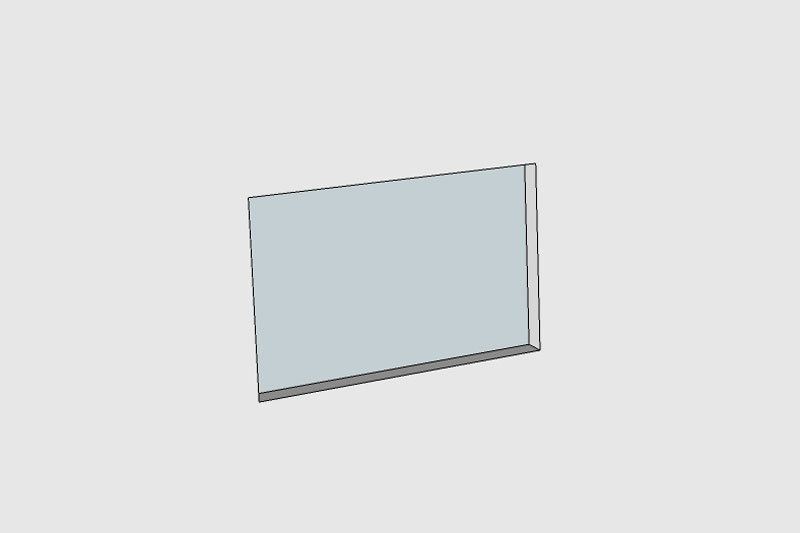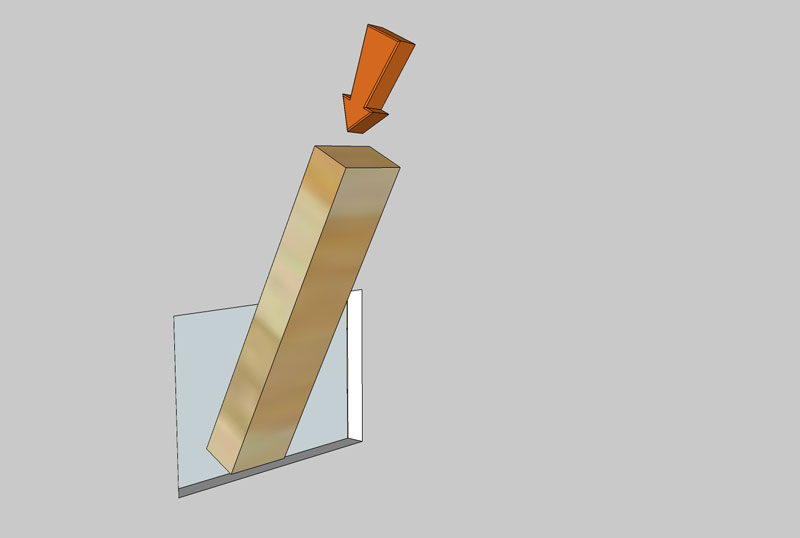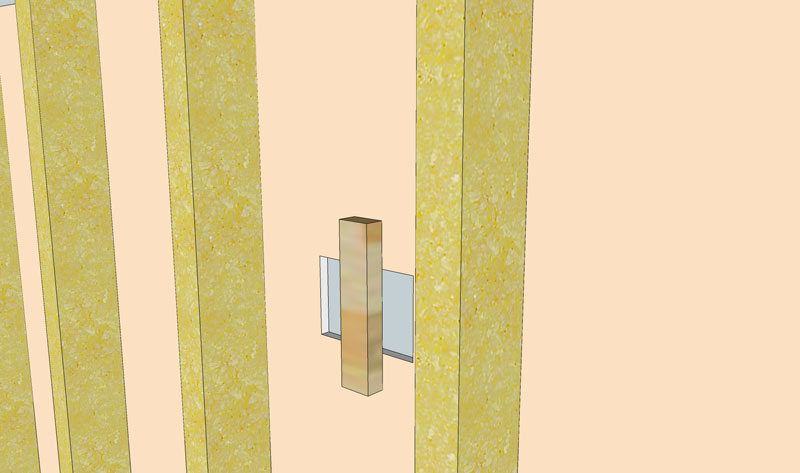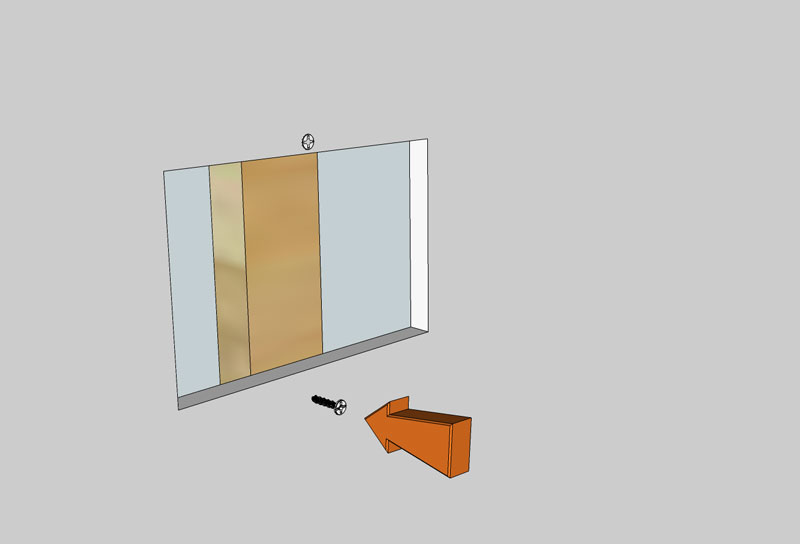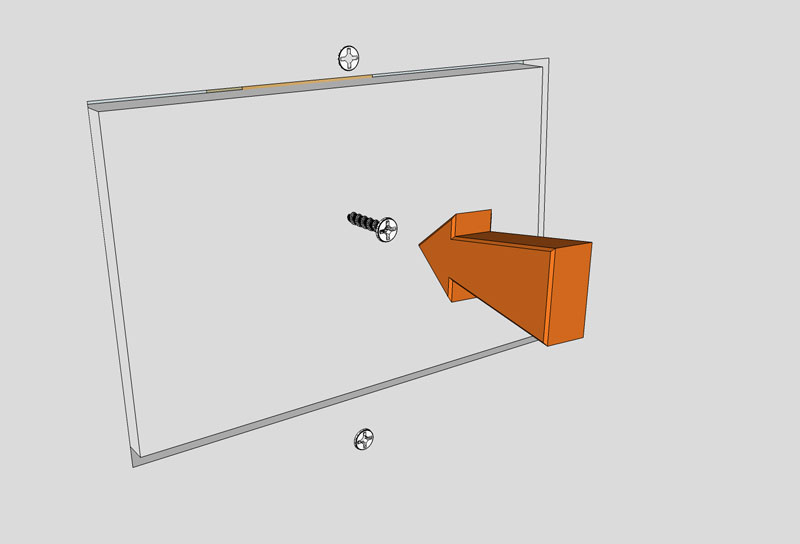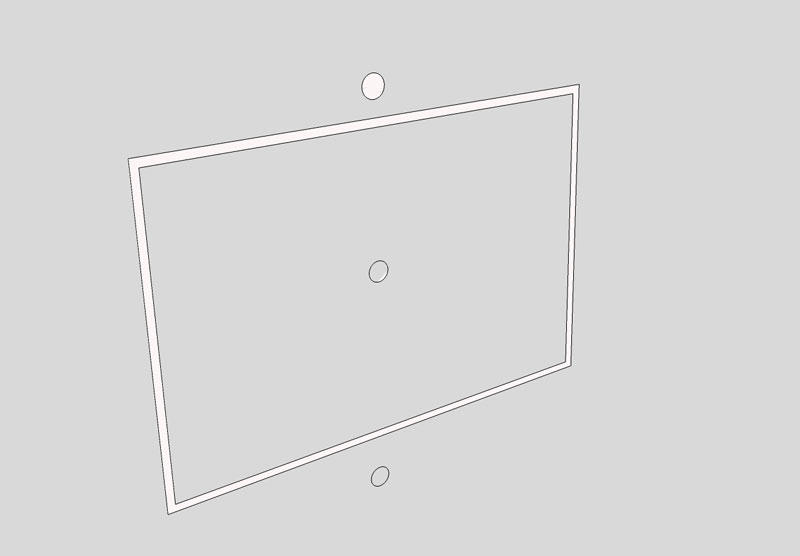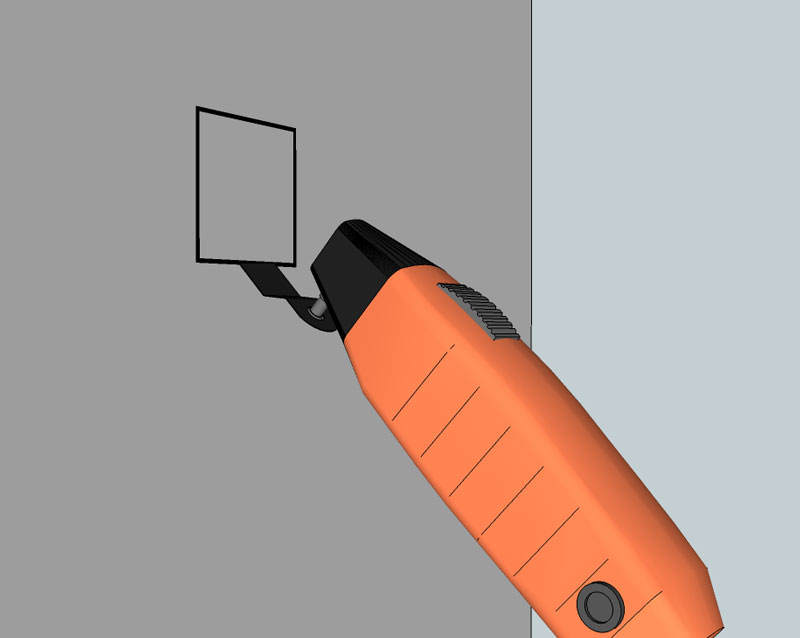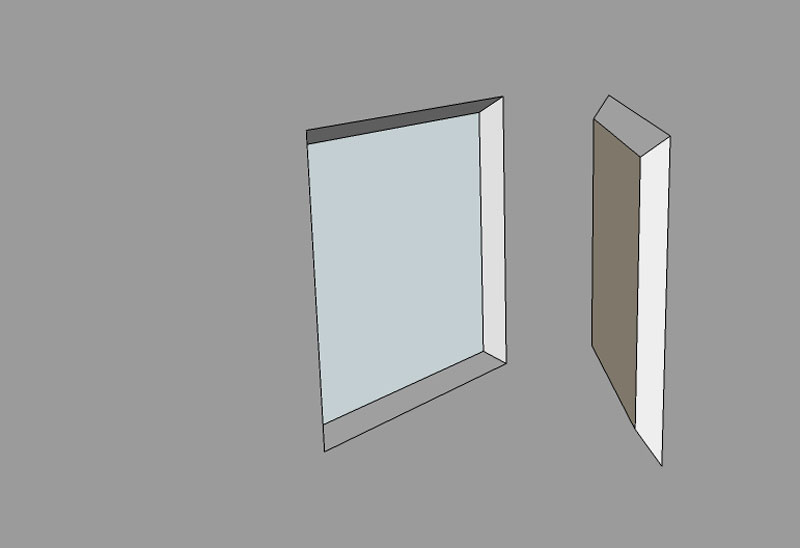Difference between revisions of "Patching plasterboard"
(→See Also: related articles) |
m (add other search terms) |
||
| (4 intermediate revisions by 2 users not shown) | |||
| Line 1: | Line 1: | ||
| − | A quick overview of how to make repairs to holes in plasterboard walls and ceilings. | + | A quick overview of how to make repairs to holes in plasterboard (aka drywall / sheetrock) walls and ceilings. |
==So you have a hole?== | ==So you have a hole?== | ||
| Line 6: | Line 6: | ||
[[image:PBPatch1.jpg]] | [[image:PBPatch1.jpg]] | ||
| − | ==How to== | + | ==How to - Patching using a support batten== |
The easiest way to fix a plaster board patch is to a support batten. Sometimes if the cut out section straddles a [[Stud wall|stud]] or joist, you can refix the patch to this, however in most cases you will need to cut one or more bits of batten for the purpose. Normal 2x1" or similar sized softwood is fine. Cut the length about 4" longer than the size of the hole. | The easiest way to fix a plaster board patch is to a support batten. Sometimes if the cut out section straddles a [[Stud wall|stud]] or joist, you can refix the patch to this, however in most cases you will need to cut one or more bits of batten for the purpose. Normal 2x1" or similar sized softwood is fine. Cut the length about 4" longer than the size of the hole. | ||
| Line 23: | Line 23: | ||
[[image:PBPatch4.jpg]] | [[image:PBPatch4.jpg]] | ||
| − | Now insert your plasterboard patch (if you don't have one you took out, then you will need to cut one to fit. It needs to be a few mm smaller in each direction. If you need to buy plaster board remember it comes in two common | + | Now insert your plasterboard patch (if you don't have one you took out, then you will need to cut one to fit. It needs to be a few mm smaller in each direction. If you need to buy plaster board remember it comes in two common thicknesses (9mm and 12mm) - if you are unsure, then the thinner board can always be filled flush later (or packed out level). Screw that to your batten. Again set the screw below the surface. |
[[image:PBPatch5.jpg]] | [[image:PBPatch5.jpg]] | ||
| Line 30: | Line 30: | ||
[[image:PBPatch6.jpg]] | [[image:PBPatch6.jpg]] | ||
| + | |||
| + | ==How to - Using a bevel edged hole and matching plug== | ||
| + | If you want an easy repair without the need for a batten and screws, you can can cut away a section of board such that the edges of the cut are beveled at around 45 degrees. This is a technique that is easy to carry out using a number of plunge cuts with a fine kerf blade mounted in an [[Oscillating tools|Oscillating Tool]] like a Multimaster: | ||
| + | |||
| + | [[image:BevelPatch1.jpg]] | ||
| + | |||
| + | Make each cut such that the bevel is widest at surface of the cut. This will release a tapered plug of plasterboard: | ||
| + | |||
| + | [[image:BevelPatch2.jpg]] | ||
| + | |||
| + | The plug will sit back in the hole, but should not pass right through the plasterboard. To refit it and fill the hole, simply spread some adhesive (no more nails, caulk, bonding plaster etc) around the cut edges and push back into the hole. Use enough adhesive such that it sits just a little proud of the surface. Now using a straight edge or a piece of timber, push it flat against the wall over the plug. This will then level it perfectly flush with the surface. Leave it to set a bit, and then use a scraper to smooth out any surfaces irregularities in the adhesive. | ||
| + | |||
=See Also= | =See Also= | ||
* [[Fill]] | * [[Fill]] | ||
* [[Filler]] | * [[Filler]] | ||
| + | * [[Oscillating tools]] | ||
* [[Special:Allpages|Wiki Contents]] | * [[Special:Allpages|Wiki Contents]] | ||
* [[Special:Categories|Wiki Subject Categories]] | * [[Special:Categories|Wiki Subject Categories]] | ||
| Line 40: | Line 53: | ||
[[Category:Building]] | [[Category:Building]] | ||
[[Category:Construction]] | [[Category:Construction]] | ||
| + | [[Category:Repair]] | ||
| + | [[Category:Decorating]] | ||
| + | [[Category:Plastering]] | ||
| + | [[Category:Walls]] | ||
Latest revision as of 21:19, 13 April 2018
A quick overview of how to make repairs to holes in plasterboard (aka drywall / sheetrock) walls and ceilings.
So you have a hole?
If you need to make a hole in plasterboard for any reason (to gain access to wires and pipes etc), one handy tip is to keep the bit of board you cut out - since it can be used to effect a repair. The finer the tool used for cutting the board - the less making good later.
How to - Patching using a support batten
The easiest way to fix a plaster board patch is to a support batten. Sometimes if the cut out section straddles a stud or joist, you can refix the patch to this, however in most cases you will need to cut one or more bits of batten for the purpose. Normal 2x1" or similar sized softwood is fine. Cut the length about 4" longer than the size of the hole.
Insert the batten into the hole:
...position it, and hold in place here.
Now drive plasterboard / dry lining screws through the surface of the wall into the ends of the batten:
Try to sink the screw heads just a little below the surface of the wall.
Now insert your plasterboard patch (if you don't have one you took out, then you will need to cut one to fit. It needs to be a few mm smaller in each direction. If you need to buy plaster board remember it comes in two common thicknesses (9mm and 12mm) - if you are unsure, then the thinner board can always be filled flush later (or packed out level). Screw that to your batten. Again set the screw below the surface.
Finally fill any gaps and the screw holes prior to making good the decorations. On many surfaces its possible to make a nearly invisible repair.
How to - Using a bevel edged hole and matching plug
If you want an easy repair without the need for a batten and screws, you can can cut away a section of board such that the edges of the cut are beveled at around 45 degrees. This is a technique that is easy to carry out using a number of plunge cuts with a fine kerf blade mounted in an Oscillating Tool like a Multimaster:
Make each cut such that the bevel is widest at surface of the cut. This will release a tapered plug of plasterboard:
The plug will sit back in the hole, but should not pass right through the plasterboard. To refit it and fill the hole, simply spread some adhesive (no more nails, caulk, bonding plaster etc) around the cut edges and push back into the hole. Use enough adhesive such that it sits just a little proud of the surface. Now using a straight edge or a piece of timber, push it flat against the wall over the plug. This will then level it perfectly flush with the surface. Leave it to set a bit, and then use a scraper to smooth out any surfaces irregularities in the adhesive.
